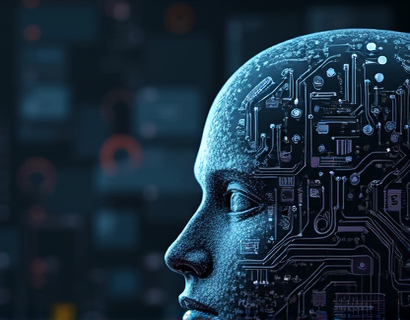Transforming Access to Specialized Social Services Information Through AI-Powered Chat Interfaces
The integration of artificial intelligence in accessing specialized social services information marks a significant advancement in how individuals, ranging from adults to students and young learners, can engage with essential resources. This shift towards AI-driven chat platforms not only simplifies the process of finding accurate and relevant information but also ensures a safe and educational experience for all users. The purpose of this article is to delve into how these innovative chat interfaces are revolutionizing the landscape of social services information dissemination.
The Need for Specialized Information
Social services encompass a broad range of support systems designed to assist individuals and families in various aspects of life, including healthcare, education, housing, and employment. The complexity and specificity of these services necessitate a reliable and accessible source of information. Traditionally, users have relied on websites, hotlines, and in-person consultations to gather this information. However, these methods often fall short in providing timely, accurate, and personalized assistance. The introduction of AI-powered chat interfaces addresses these shortcomings by offering an interactive and efficient means of accessing specialized social services information.
How AI Chat Interfaces Work
AI chat interfaces operate by utilizing natural language processing and machine learning algorithms to understand and respond to user queries. These systems are trained on vast datasets that include verified information about social services, enabling them to provide accurate and contextually relevant responses. Users can interact with these chat interfaces through text-based conversations, asking questions, and receiving detailed explanations or guidance on available services. The AI's ability to learn and adapt based on user interactions further enhances the quality and accuracy of the information provided over time.
Ensuring Verified and Specialized Content
A critical aspect of these AI chat interfaces is the commitment to providing verified and specialized content. This is achieved through rigorous data sourcing and collaboration with reputable organizations in the social services sector. The information fed into the AI systems is continuously updated and cross-verified to ensure its accuracy and relevance. This approach not only builds trust with users but also ensures that the guidance provided is based on the latest and most reliable data available. For users seeking specific types of assistance, such as mental health support or legal aid, the chat interface can direct them to the most appropriate resources with confidence.
Tailoring Content for Diverse User Groups
One of the most significant advantages of AI-powered chat interfaces is their ability to tailor content to different user groups, including adults, students, and young learners. For adults, the chat can provide in-depth information on complex social service topics, such as benefits eligibility, legal rights, and community resources. For students and young users, the content is simplified and made more engaging, using language and examples that are easier to understand. This customization ensures that all users, regardless of their background or level of knowledge, can access and benefit from the information provided.
Enhancing User Experience through Personalization
Personalization is a key feature of AI chat interfaces, allowing for a more intuitive and user-friendly experience. By analyzing user interactions and preferences, the AI can offer personalized recommendations and guidance. For instance, a user searching for housing assistance might receive not only general information but also localized options based on their geographic location. This level of personalization not only enhances user satisfaction but also increases the likelihood that users will find the information they need quickly and efficiently.
Promoting Informed Decision-Making
The ultimate goal of these AI chat interfaces is to empower users to make informed decisions regarding their social service needs. By providing comprehensive and accurate information, users can better understand their options, evaluate their suitability, and take appropriate actions. This is particularly crucial in areas such as healthcare, where informed decisions can significantly impact well-being. The chat interface serves as a trusted guide, helping users navigate the often complex landscape of social services with confidence.
Ensuring Safety and Educational Value
Safety and educational value are paramount in the design and implementation of AI chat interfaces, especially when catering to young users. These platforms are equipped with robust safety measures to ensure a secure environment. Content is carefully curated to be age-appropriate and free from harmful or inappropriate information. Additionally, the chat interface can serve as an educational tool, providing users with valuable insights and knowledge about social services and related topics. This dual purpose not only assists users in immediate needs but also contributes to their overall understanding and awareness.
Case Studies and Success Stories
Several initiatives have already demonstrated the positive impact of AI-powered chat interfaces in providing social services information. One notable example is a pilot program implemented in a major city, where the chat interface was integrated into the local government's website. The program received overwhelmingly positive feedback from users, with many reporting a significant reduction in the time taken to find the necessary information. Another success story comes from an educational institution that incorporated the chat interface into its counseling services, resulting in improved student satisfaction and better outcomes in addressing their social and emotional needs.
Challenges and Future Directions
Despite the numerous benefits, the deployment of AI chat interfaces in social services information dissemination is not without challenges. One major challenge is ensuring the continuous accuracy and relevance of the information provided, given the dynamic nature of social services. Regular updates and collaborations with domain experts are essential to maintain the quality of the content. Additionally, there is a need to address potential biases in AI algorithms and ensure that the chat interfaces are accessible to users with varying levels of digital literacy. Future developments may include integrating multimedia elements, such as videos and infographics, to enhance user engagement and comprehension.
Conclusion
The integration of AI-powered chat interfaces in accessing specialized social services information represents a transformative step forward. By providing verified, personalized, and educational content, these platforms empower users to make informed decisions and access essential resources more efficiently. As technology continues to evolve, the potential for these chat interfaces to further enhance the delivery of social services information is vast. The focus remains on ensuring that these tools are safe, reliable, and accessible to all, ultimately contributing to a more informed and supported community.











































